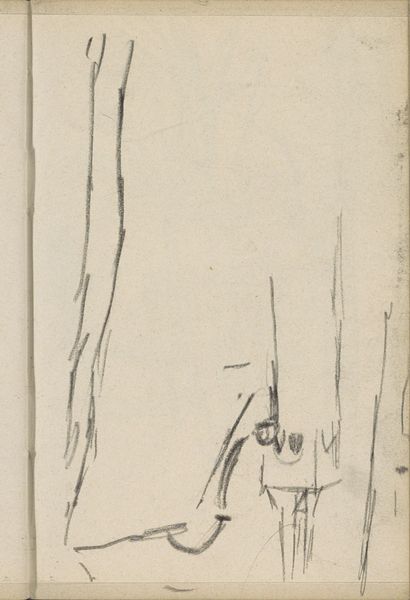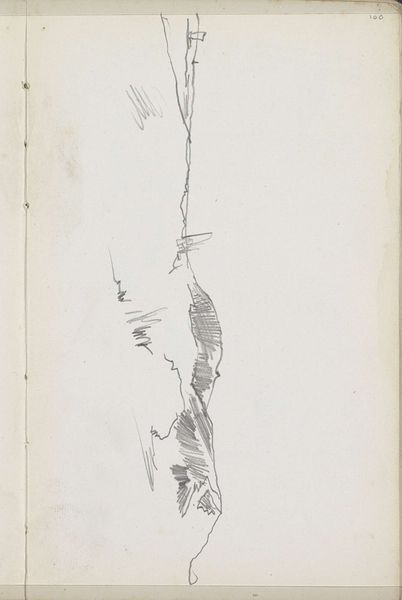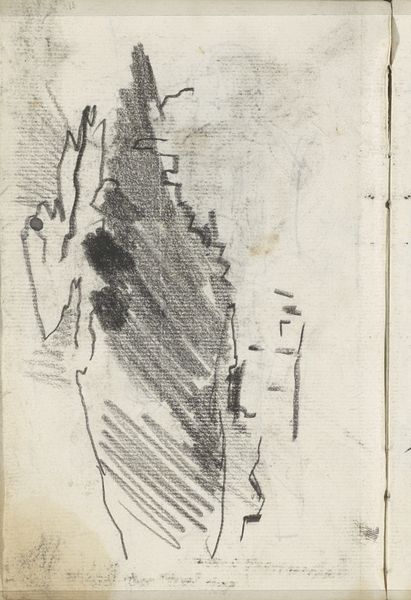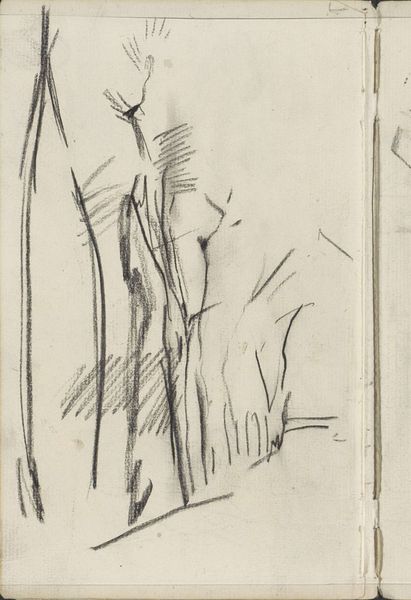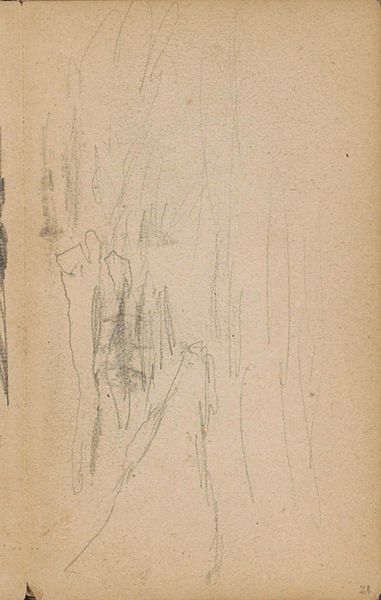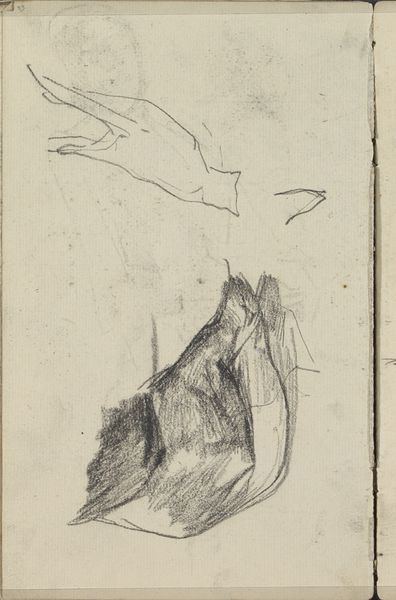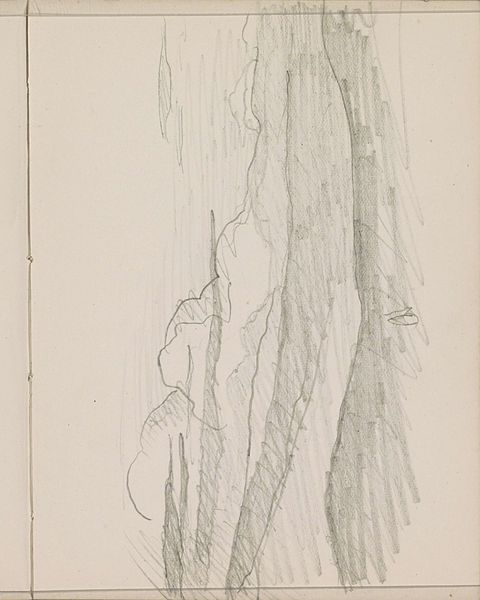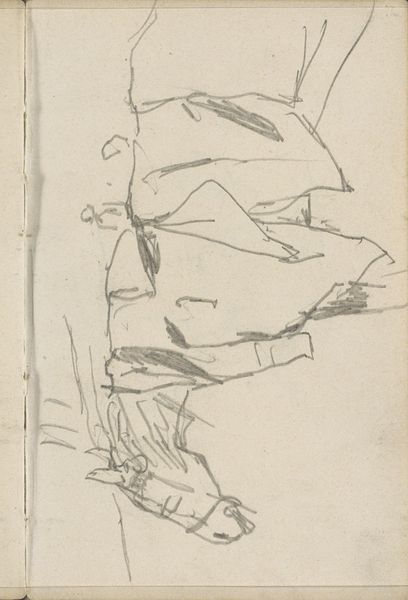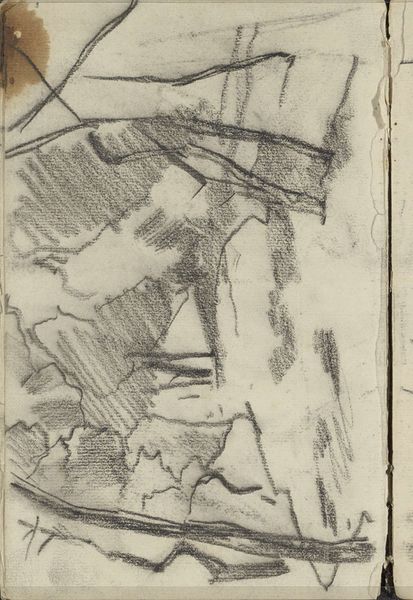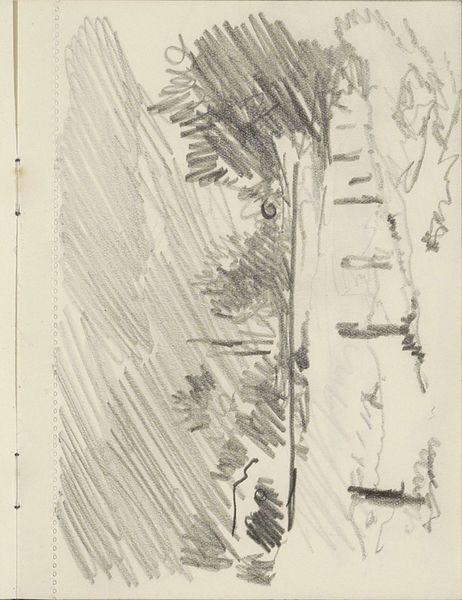
drawing, pencil
#
drawing
#
pencil sketch
#
landscape
#
pencil
#
realism
Copyright: Rijks Museum: Open Domain
Curator: Breitner's "Landschap met een pad," created with pencil between 1884 and 1886, offers a compelling glimpse into the artist’s vision. It’s currently held in the Rijksmuseum collection. Editor: The sketch exudes a certain rawness. The lines are stark, the composition tilting towards a somewhat abstract rendering of a natural scene, dominated by linear and tonal contrast. Curator: Absolutely. It's a snapshot of his engagement with Realism and his contemporary, social, and artistic moment in Amsterdam. One wonders, what specific landscape might Breitner be channeling, and why this choice? Amsterdam was rapidly modernizing; Breitner documented these transformations by choosing commonplace urban existences—the working class and everyday labor as his muse. How did those same artistic observations shape these more private moments in the landscape? Editor: The almost aggressive pencil strokes feel imbued with the same urgent expression as his better-known cityscapes. You sense him wrestling to contain his view into pure shape. It could almost be reduced to a series of semiotic marks: lines that strive toward recognition but defer that certainty, emphasizing their quality as lines rather than objects in a field. Curator: It makes one think about the relationship between Realism as an aesthetic movement versus real lived experiences. Were those two things aligned? How was Breitner representing the landscape as not merely a natural object, but also, a cultural artifact, bearing its own set of meanings in the broader context of society? What were those associations to both the painter and his audience, for whom the definition of a landscape became intrinsically tethered to social identity? Editor: What’s visually fascinating to me, beyond socio-historical speculation, is how the drawing manipulates space and volume through strictly graphic means. Light seems sculpted from shadow, texture derived from directional strokes, offering depth while resisting any facile, pictorial illusion. Curator: So the artwork then serves as both a historical record and a formal study—an engagement with place, time, society, and line? Editor: Precisely, existing within, between and beyond a moment.
Comments
No comments
Be the first to comment and join the conversation on the ultimate creative platform.

